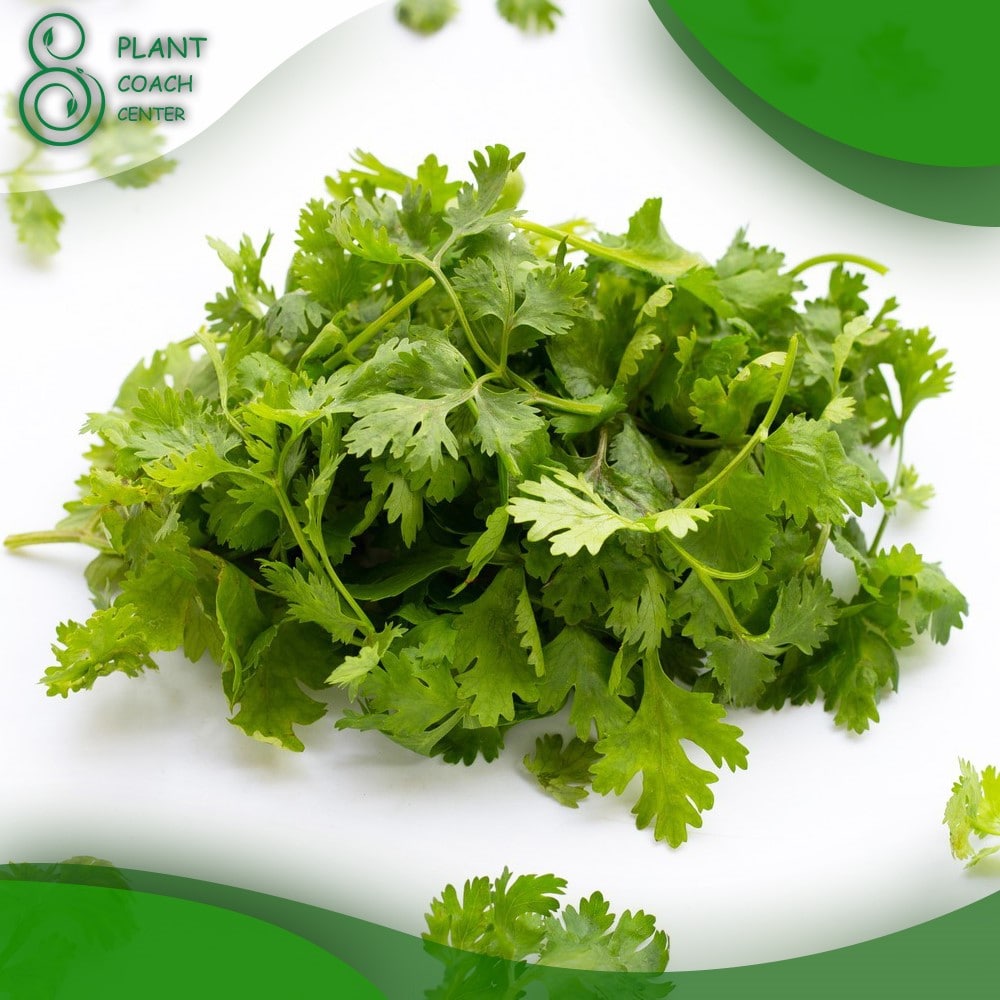When to Plant Cilantro
Introduction
Cilantro, also known as Coriandrum sativum, is a versatile herb widely used in culinary dishes around the world. Its distinctive flavor adds a fresh and citrusy kick to various cuisines, making it a favorite among home gardeners. To ensure successful cilantro cultivation, understanding the optimal time to plant cilantro and cilantro seeds is crucial.
In this comprehensive guide, we will explore the various aspects of growing cilantro, including its growing requirements, determining the right planting time, caring for the plants, and harvesting techniques. For additional resources and guidance, you can visit plantcoachcenter.com.
Understanding Cilantro and Its Growing Requirements
What is Cilantro?
Cilantro is an annual herb that belongs to the Apiaceae family. It features delicate, lacy leaves and white flowers that eventually develop into seeds known as coriander. Cilantro is commonly used in Mexican, Indian, Middle Eastern, and Asian cuisines, where it adds a refreshing and aromatic touch to dishes.
Cilantro Varieties
There are several cilantro varieties available for cultivation, each with its unique characteristics. Some popular varieties include:
Santo: This variety is known for its slow bolting and robust growth, making it ideal for extended harvests.
Leisure: Leisure cilantro is prized for its high leaf-to-stem ratio, providing abundant foliage for culinary use.
Delfino: Delfino cilantro has feathery leaves that resemble ferns, adding an attractive visual element to gardens and dishes.
Calypso: Calypso cilantro has a more compact growth habit, making it suitable for container gardening and small spaces.
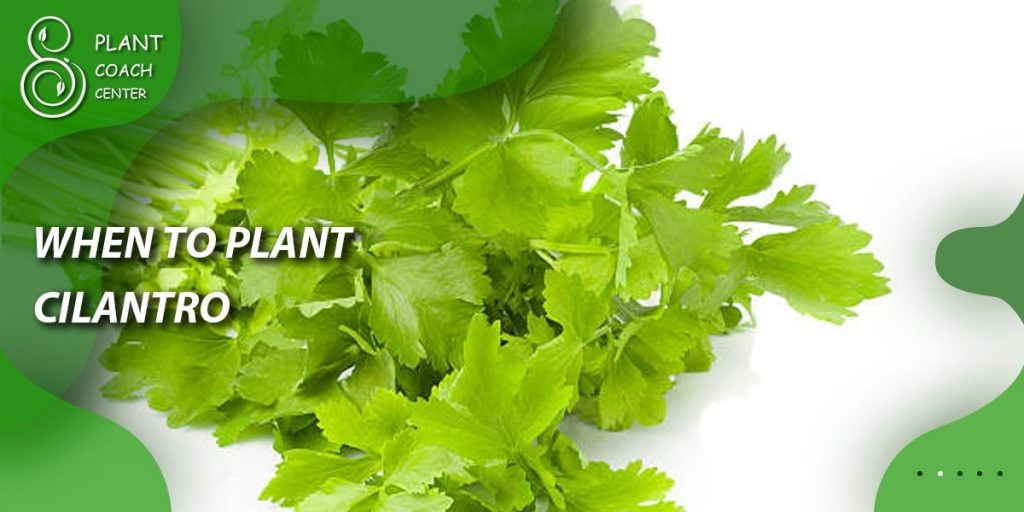
Growing Conditions for Cilantro
To maximize cilantro’s growth and flavor, it is essential to provide the right growing conditions. Here are some key factors to consider:
Sunlight: Cilantro thrives in partial shade to full sun. Aim for at least 4-6 hours of direct sunlight per day.
Temperature: Cilantro prefers cool temperatures between 50°F and 85°F (10°C – 29°C). It tends to bolt and go to seed quickly in hot weather.
Soil: Well-draining soil with a slightly acidic to neutral pH (around 6.0-7.0) is ideal for cilantro. Amend heavy clay soils with organic matter to improve drainage.
Watering: Cilantro requires consistent moisture but not waterlogged conditions. Water the plants deeply whenever the top inch of soil feels dry.
Fertilization: Incorporate compost or well-balanced organic fertilizer into the soil before planting. Avoid excessive nitrogen fertilizers, as they can encourage leafy growth but reduce flavor.
Determining the Right Time to Plant Cilantro
Understanding Cilantro’s Life Cycle
Cilantro goes through distinct stages of growth, from seed to maturity. Understanding these stages helps determine the best time to plant cilantro:
Seed Germination: Cilantro seeds germinate within 7 to 14 days under optimal conditions.
Seedling Stage: After germination, cilantro seedlings develop their first true leaves and establish their root systems.
Vegetative Growth: During this stage, cilantro focuses on leaf production and growth. It is the best time to harvest leaves for culinary use.
Bolting: Bolting refers to the rapid growth of the cilantro plant, leading to the production of flowers and seeds. Cilantro tends to bolt in response to high temperatures or long daylight hours.
Seed Production: Once the flowers bloom and fade, cilantro produces seeds known as coriander. These seeds can be collected for culinary use or saved for future planting.
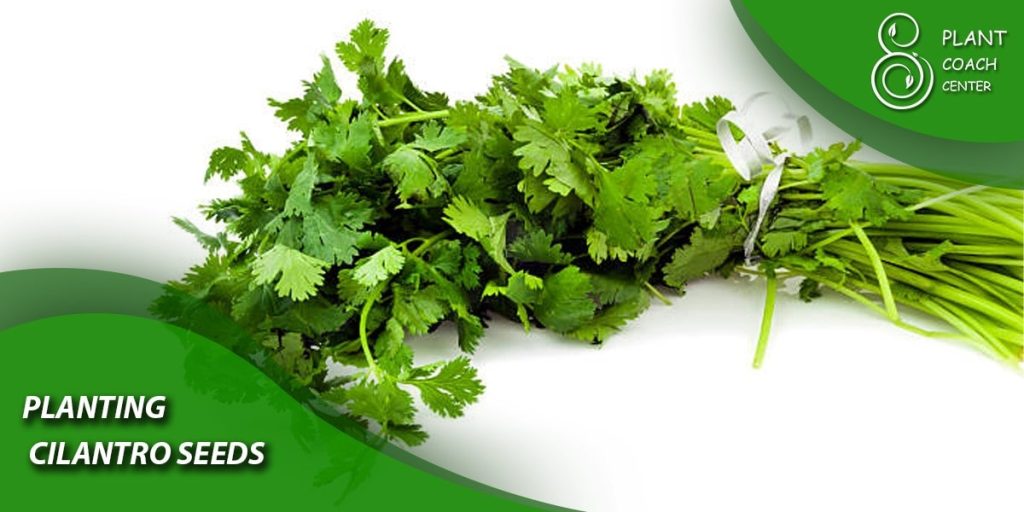
Planting Cilantro Seeds
When planting cilantro from seeds, it’s important to follow the right techniques to ensure successful germination and establishment. Here’s a step-by-step process for planting cilantro seeds:
Seed Preparation: Soak the cilantro seeds in water for about 24 hours before planting to help facilitate germination. This process softens the seed coat and improves the chances of successful sprouting.
Sowing Techniques: Cilantro seeds are relatively small and should be sown shallowly. Make furrows in the prepared soil or use a seed tray with well-draining potting mix. Scatter the seeds evenly along the furrows or space them out in the seed tray.
Optimal Soil Conditions: Cilantro prefers loose, well-draining soil. Ensure the soil is properly amended with organic matter such as compost or well-rotted manure to enhance its moisture retention and nutrient content.
Watering: After sowing the seeds, gently water the area to ensure good soil-to-seed contact. Maintain consistent moisture by lightly watering the seeds when the soil feels dry. Avoid overwatering, as it can lead to seed rot and poor germination.
Thin Out Seedlings: Once the cilantro seedlings have emerged and reached a height of 2-3 inches, thin them out to provide adequate space for growth. Space the seedlings 4-6 inches apart to allow proper airflow and prevent overcrowding.
Caring for Cilantro Plants
Watering and Moisture Management
Cilantro plants require consistent moisture to thrive. Proper watering practices are essential for their growth and flavor development. Here are some tips for watering and moisture management:
Monitor Soil Moisture: Check the soil moisture regularly by inserting your finger into the soil. If the top inch feels dry, it’s time to water.
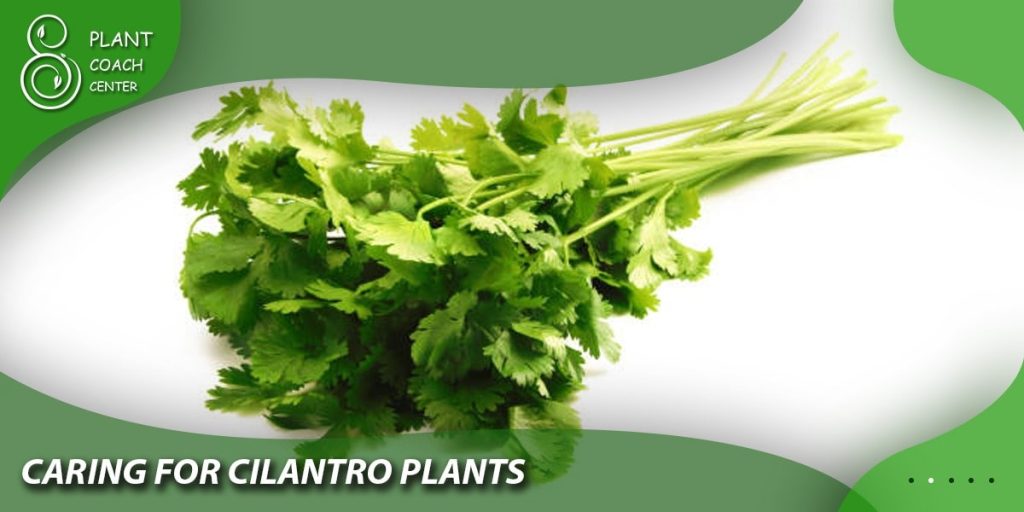
Watering Frequency: Water cilantro plants deeply, ensuring the water reaches the root zone. Provide enough water to moisten the top 6-8 inches of soil.
Avoid Overwatering: Cilantro plants are susceptible to root rot if the soil remains excessively wet. Avoid overwatering and allow the soil to dry slightly between waterings.
Mulching: Apply a layer of organic mulch, such as straw or wood chips, around the base of the plants. Mulching helps conserve moisture, regulate soil temperature, and suppress weed growth.
Managing Pests and Diseases
Cilantro plants are generally resilient, but they can be susceptible to certain pests and diseases. Here are some common issues you may encounter and how to manage them:
Aphids: These small, sap-sucking insects can be controlled by spraying a solution of water and mild soap directly on the affected plants. Alternatively, beneficial insects like ladybugs can help control aphid populations.
Powdery Mildew: This fungal disease appears as a white, powdery coating on the leaves. Ensure proper airflow around the plants by spacing them adequately and avoiding overhead watering. Fungicidal sprays may be necessary if the problem persists.
Cilantro Wilt: Cilantro wilt is caused by a soil-borne fungus. Practice good sanitation, avoid overwatering, and ensure proper drainage to prevent the disease. Remove and destroy infected plants to prevent the spread of the fungus.
Harvesting Cilantro
Harvesting cilantro at the right time ensures the best flavor and prolongs the plant’s productivity. Here’s how to harvest cilantro properly:
Leaf Harvesting: Start harvesting cilantro leaves once the plants have grown to a height of 4-6 inches. Use clean, sharp scissors or pruning shears to snip off the outer leaves about 1 inch above the soil level. This allows the inner leaves to continue growing.
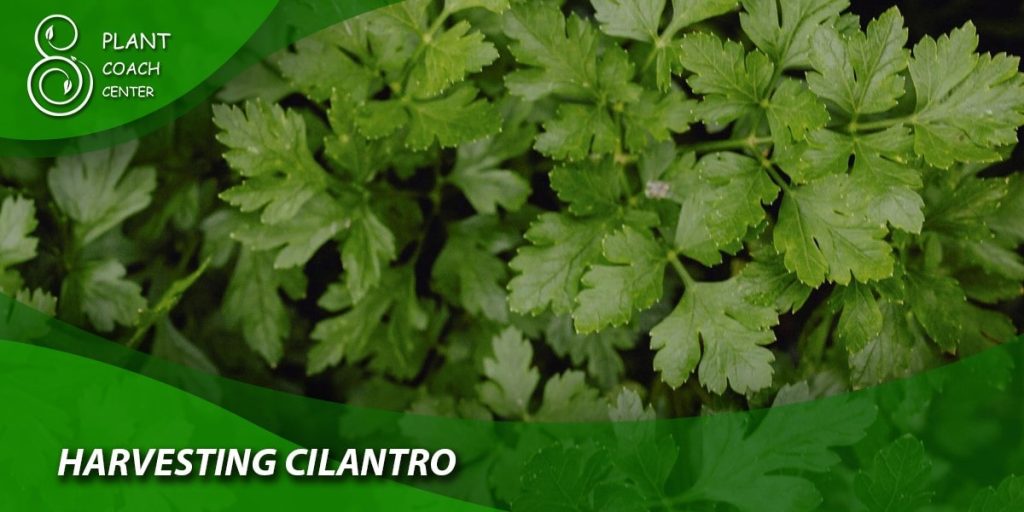
Continuous Harvesting: To encourage continuous leaf production, harvest only a few leaves from each plant at a time. This prevents the plants from becoming stressed and bolting prematurely.
Bolting and Seed Harvesting: When cilantro plants start to bolt and develop flowers, the flavor of the leaves diminishes. However, you can allow some plants to bolt and produce seeds (coriander) for culinary use or future planting. Harvest the seeds when they turn brown and dry on the plant. Cut the seed heads and place them in a paper bag to dry further. Rub the dried seed heads to release the coriander seeds.
Conclusion
Cilantro is a versatile herb that adds a unique flavor to various dishes. By understanding the optimal time to plant cilantro, as well as its growing requirements and care, you can ensure a successful harvest of this aromatic herb. Remember to consider your local climate, provide proper watering and fertilization, and manage pests and diseases, and harvest cilantro leaves and seeds at the right time. With these tips and knowledge, you’ll be well-equipped to grow and enjoy fresh cilantro from your own garden.
When is the best time to plant cilantro in different regions?
The ideal planting time varies depending on the local climate. Refer to the guidelines provided in Section 2.2.
Can cilantro be grown indoors?
Yes, cilantro can be successfully grown indoors. Follow the same planting and care guidelines, ensuring access to adequate light.
Why do cilantro plants bolt and go to seed quickly?
Bolting is a natural process triggered by high temperatures or prolonged exposure to heat. Provide shade and harvest regularly to delay bolting.
How often should cilantro plants be watered?
Cilantro plants prefer consistently moist soil. Water them when the top inch of soil feels dry to the touch.
Can I save cilantro seeds for future planting?
Yes, cilantro seeds can be collected for future planting. Allow the plants to flower and produce seeds, then harvest and store them in a cool, dry place.
Are there any alternatives to cilantro for culinary use?
Yes, some alternatives to cilantro include parsley, dill, and culantro. They can provide similar flavors in recipes.


